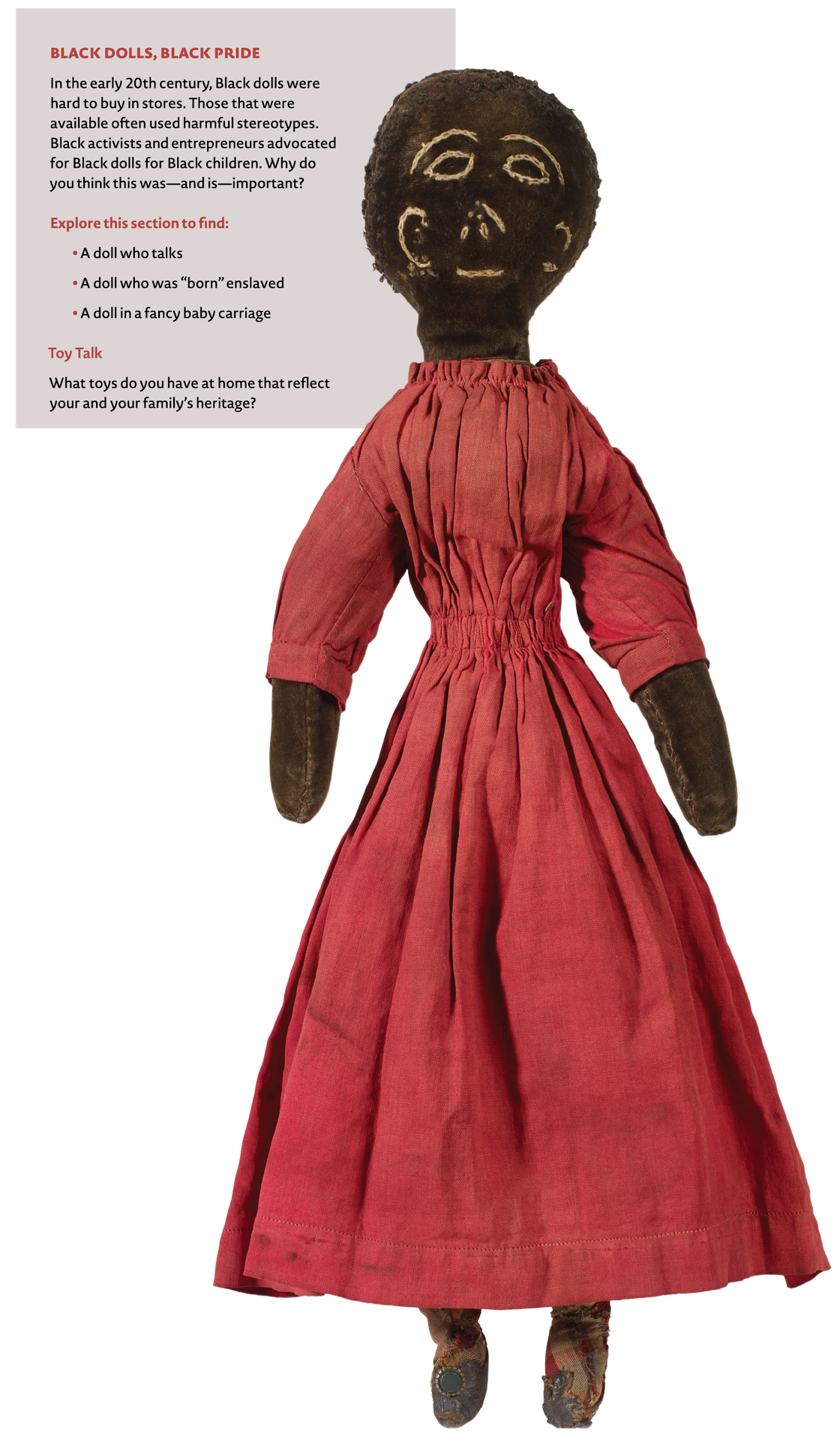




Until
the early 1900s, most Black dolls in the U.S. were handmade. European companies
manufactured the first white baby dolls in the mid-19th century and produced
Black baby dolls soon thereafter. Importation of these high-end bisque examples
was costly, however. Black reformers and parents came up with a solution: commercially-available Black dolls that
countered the effects of segregation and empowered Black children by
celebrating their features.
In
the last 70 years, people have created new meanings for Black dolls. Lawyers
brought research on racial doll preferences before the Supreme Court.
Large-scale manufacturers created Black dolls to encourage conversation around
slavery as well as contemporary standards of beauty with children. Today, Black
doll collectors continue to forge communities, in person and online, to
celebrate their shared interest.
Handmade
or commercially produced, Black dolls remain both a beloved source of play and
a key tool in teaching children about race.
In
1954, NAACP lawyer Thurgood Marshall argued against racially segregated schools
before the Supreme Court. He asked Black sociologists Kenneth and Mamie Clark
to submit testimony for Brown v. Board of
Education. Beginning with Mamie Clark's master’s thesis, the Clarks had
spent decades researching race consciousness in Black children.
Kenneth
Clark spoke broadly about their work, including the famous doll test. The
Clarks used dolls like these, identical except for skin color. They asked
children to compare them: “Which is the doll that looks like you?” “Which is
the good doll?” They found that Black children preferred the white doll.
Marshall
argued that the Clarks’ research proved racial segregation harmed Black
children and produced feelings of inferiority. The Supreme Court cited the test
as particularly influential in their decision. They ultimately ruled that
schools integrate “with all deliberate speed.”

Effanbee Toy Company Twinkie dolls, ca. 1968. Vinyl, textile. Private collection of Debbie Garrett

Gordon Parks (1912-2006), Untitled, Harlem, New York, 1947. Courtesy of and © The Gordon Parks Foundation
In
the early 20th century, many commercially available Black dolls reflected
derogatory stereotypes. The National Negro Doll Company became the first
American firm to retail Black dolls with a positive image in 1908. Founder
Richard Henry Boyd first sold imported dolls like this German example, but by
1911, he began manufacturing them, promoted with the slogan “Negro Dolls for
Negro Children.”
In
1918, Harlem businesswomen Evelyn Berry and Victoria Ross started a similar
venture to manufacture Black dolls. The Universal Negro Improvement Association,
founded by Marcus Garvey, bought the company, declaring that Black children
needed "dolls that look
like them to play with and cuddle.” They were among a number of
retailers who marketed their products through eye-catching advertisements that
aligned their products with Black middle-class uplift and social mobility.
Shindana
Toys
Baby
Nancy doll,
ca. 1968
Vinyl,
mixed fabrics
New-York
Historical Society
Following
the deadly 1968 uprising in the Watts area of Los Angeles, local Black
residents came together to create Shindana Toys, a company designed to uplift
the struggling neighborhood and create jobs. Shindana’s first doll, Baby Nancy,
celebrated Black hair and features, and sported clothes designed and sewn by
local Black women. Baby Nancy quickly became the best-selling doll in Los
Angeles, and within months was in high demand nationwide.
Pleasant
Company
Addy
Walker doll, family album quilt, Meet
Addy book, Ida Bean doll,
ca. 1993
Plastic,
mixed fabrics
New-York
Historical Society, Gift of Nicole Wagner & Wagner family, 2019.32; Quilt, Courtesy of
Emily Schulman, PhD
In
1993, after initial success with their American Girl line of dolls that
incorporated stories from American history, the Pleasant Company launched its
first Black character, Addy Walker, to tell the story of American slavery and
emancipation. Scholars of African American history contributed their insights
to develop a powerful narrative of the horrors of slavery and the triumphant
perseverance of Black families.
Addy’s
braided hair and West African cowrie shell necklace are memorable markers of
Black culture, and her quilt was modeled on an 1854 family album quilt by Black
quilter Sarah Ann Wilson. Addy even came with her own cloth doll, Ida Bean.
